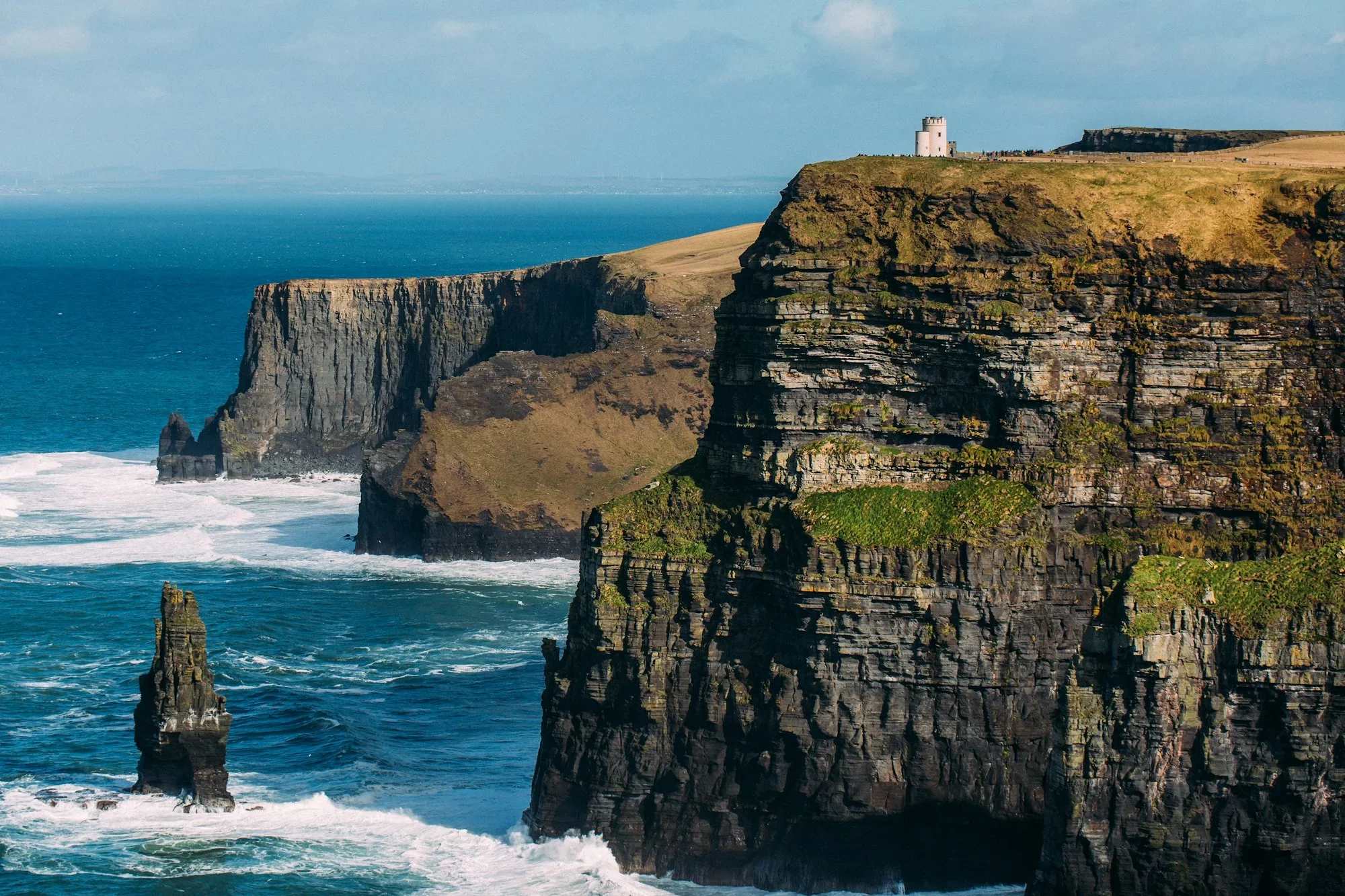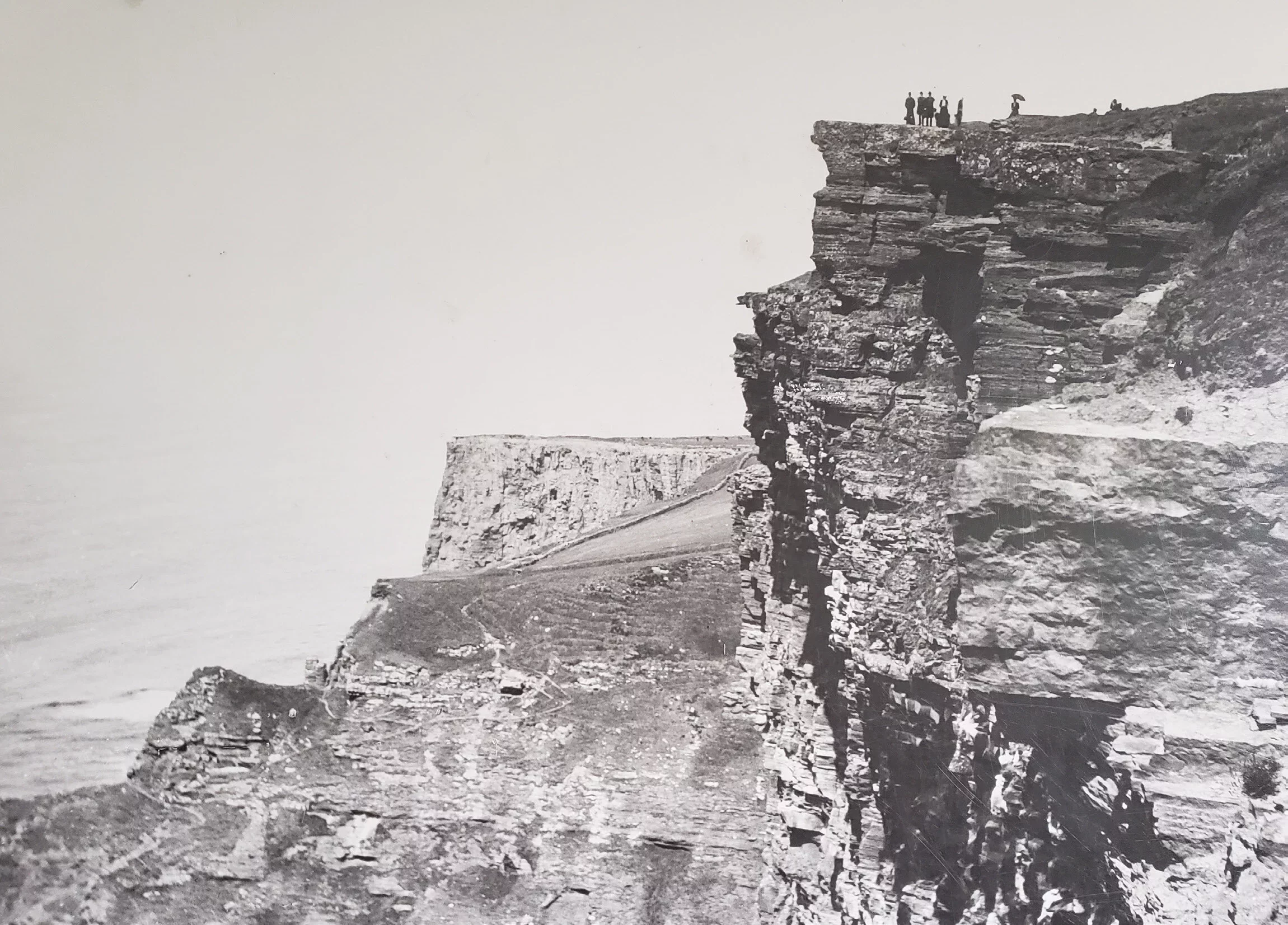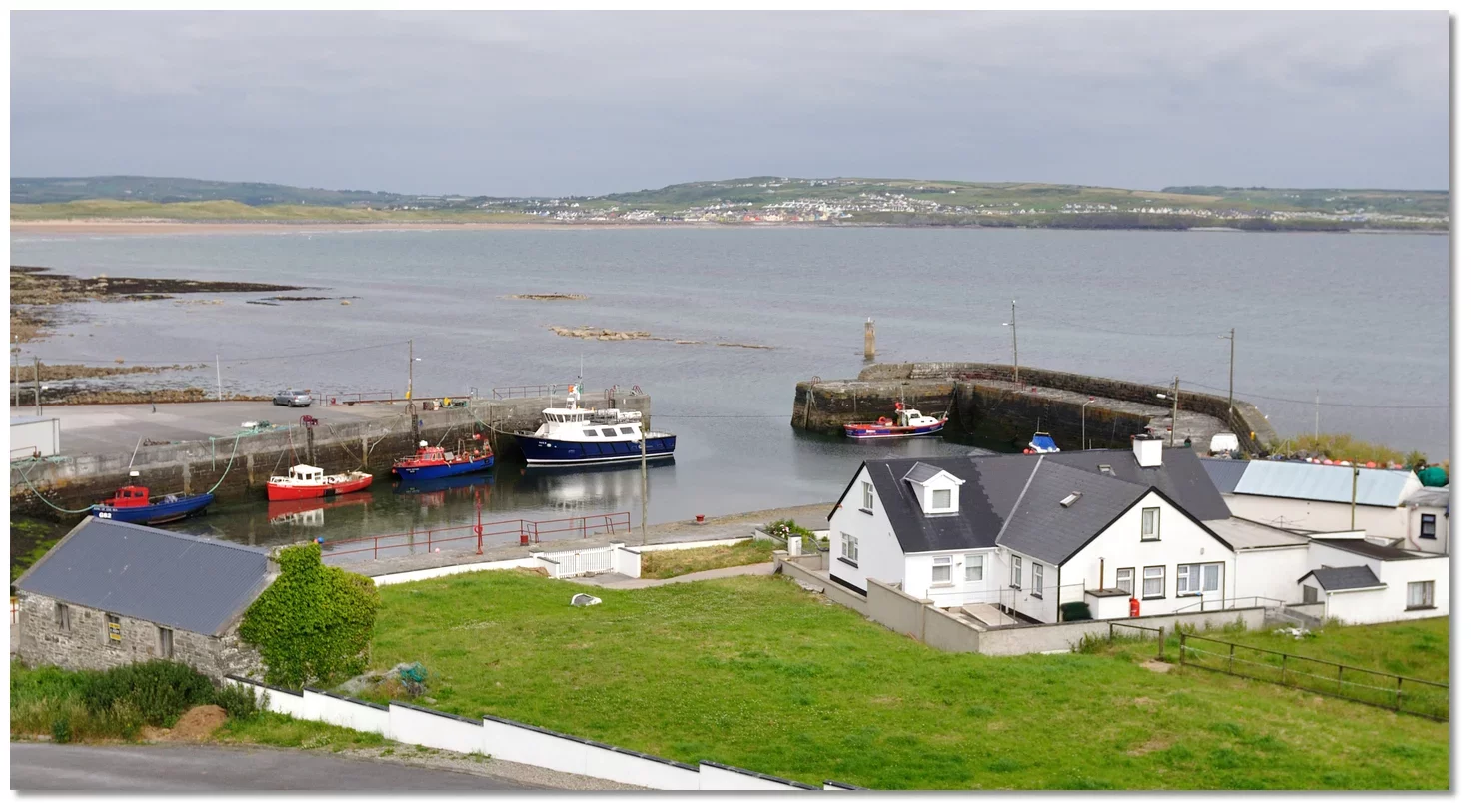Cliffs of Moher

Long before the Cliffs of Moher became one of Ireland’s most photographed landscapes, they were part of an ancient shoreline that tells a story 320 million years old. The layers of shale and sandstone that tower over today’s Atlantic were once riverbeds in a tropical delta near the equator. Over millennia, shifting continents carried them north, where the full force of the ocean carved them into the sheer walls we see today. In those rocks, fossils of ancient sea creatures still whisper of a lost world.
The cliffs rise to 214 metres at their highest point and stretch for 8 kilometres from Hag’s Head in the south to O’Brien’s Tower in the north. But their power is not only in their scale — it is in how they dominate the imagination. The fort of “Mothar,” which gave the cliffs their name, once stood at Hag’s Head. Built on a promontory long before Napoleon’s watchtowers, it marked this place as a site of both strategic importance and spiritual meaning.
A place of stories
Folklore clings to the cliffs like the mist that rolls in from the sea. One tale tells of a witch, Mal, who fell hopelessly in love with the hero Cú Chulainn. She chased him along the coast, leaping from rock to rock, until he escaped across the sea — and she, unable to follow, was dashed upon the cliffs. Her face, they say, is still etched into the stone of Hag’s Head.
Other legends speak of shipwrecks and Spanish Armada survivors who washed ashore in 1588, bringing both tragedy and fragments of foreign culture to Clare’s coast. Fishermen’s families still tell stories of wrecked galleons and treasure lost to the Atlantic’s depths.
Life on the edge
For all their wildness, the cliffs are alive with motion and sound. In spring and summer, over 30,000 seabirds nest here — puffins burrowing in grassy ledges, razorbills and guillemots clinging to vertical walls, peregrine falcons flashing past in the wind. The cliffs are a Special Protection Area for birds, a reminder that this is not just a scenic backdrop but a fragile, thriving ecosystem.
The people of Liscannor have always lived in the shadow of these cliffs. The harbour once shipped flagstone quarried from fossil-rich hills, while farmers grazed cattle on fields that fall away to sudden heights. Today, villagers walk the paths, guide visitors, and tell stories passed down through generations. The cliffs are part of daily life — a horizon that shifts with the weather, a presence felt as much as seen.
In the wider world
The Cliffs of Moher have become an icon beyond Clare. They feature in music, poetry, and film — from Harry Potter and the Half-Blood Prince to The Princess Bride — each adding to their mythic aura. And yet, for locals, their significance is quieter. They are the familiar backdrop to childhoods, the marker of home for those returning, the anchor of identity for a village at their feet.
To visit is to connect
A walk along the cliff path from Liscannor towards Doolin is more than exercise. It is a journey across time — past medieval ruins, ancient forts, wildflower meadows, and seabird colonies, with each step carrying you further into the story of this place. By boat from Liscannor Harbour, the cliffs take on another character: sheer walls rising out of the sea, cathedral-like in their scale. From above or below, they inspire the same awe — a feeling of smallness, but also belonging, in the vastness of the Atlantic.
For Liscannor, the cliffs are not just a destination. They are the heartbeat of the village — a source of stories, livelihoods, and pride. To stand here is to stand where land meets legend, where Ireland shows its most dramatic face, and where time itself feels carved in stone.
Other Heritage sites

Liscannor Stone -Fossils, Flagstones, and a Village Built on Rock
In the 1800s, Cornelius O’Brien promoted its use in projects around the Cliffs of Moher, providing vital local employment. By the late 19th and early 20th centuries, stone from Liscannor was shipped abroad through the village harbour, valued for paving and buildings in cities far beyond Clare. Today, Liscannor Stone continues to be admired worldwide, linking the village’s past to its present and keeping its reputation alive as one of Ireland’s most famous building stones.

Liscannor Harbour & Pier - Stone, Sea, and Stories
Liscannor Harbour is the historic heart of the village, a pier built in the 1820s. The harbour’s greatest export was Liscannor flagstone, shipped from its pier to pave the grand streets of cities like London, Paris, and New York. Each slab of blue-grey stone, etched with the ripple-marks of an ancient sea, carried a piece of our village across the globe. To walk on these historic pavements is to walk on Liscannor's own story, a testament to the labour and geology of this small corner of County Clare.
Ready to Explore Liscannor?
Questions? Need directions or recommendations? We’re here to help you make the most of your time in Liscannor.